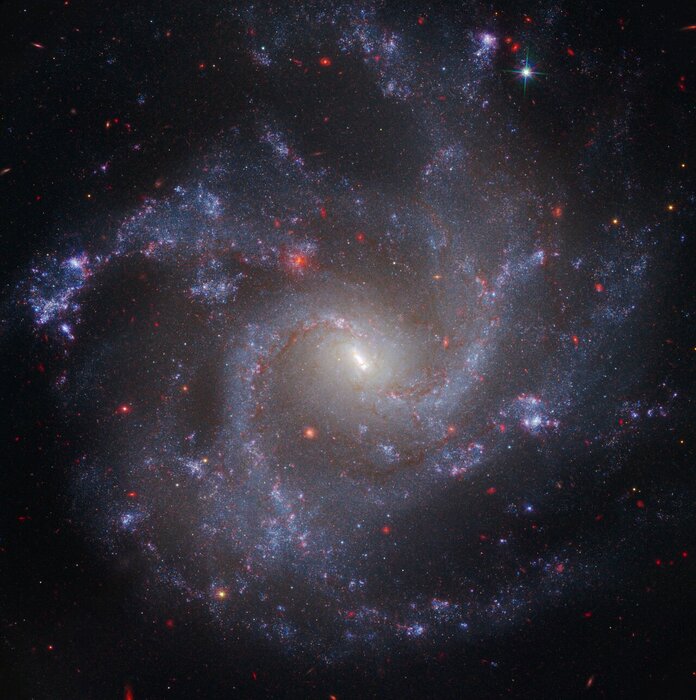By Tom Metcalfe - NBC News
The Hubble Space Telescope was able to capture for the first time an impressive Einstein ring billions of light years from Earth, a phenomenon named after the German scientist because he was the first to postulate that gravity can bend light.
The round object seen in the center of the photograph released by the European Space Agency (ESA) corresponds to three galaxies that nevertheless appear as if they were seven.
The farthest galaxy - a special type of very bright galaxy with a gigantic black hole at its center known as a quasar - is about 15 billion light-years from Earth.
Image of the Einstein Ring captured by the Hubble Space TelescopeESA / Hubble / NASA
At such a great distance, it should be invisible even to the best space telescopes, but the two galaxies in front of it, about 3 billion light-years away, cause its light to bend.
Its image, therefore, appears in five different places: four times in the ring and once in the center of it, although it can only be detected through the numerical data of the telescope.
This rare cosmic phenomenon is named after Einstein, who predicted in 1911 that gravity would affect light in the same way that it affects matter.
The physicist proposed the idea as proof of his theory of general relativity in 1915.
[Billionaire Jeff Bezos makes history by completing the first spaceflight without a pilot and manned only by civilians]
In 1919, British astronomer Arthur Eddington confirmed the effect during a solar eclipse on Prince's Island, off the west coast of Africa, by observing that the stars near the eclipsed disk appeared fractionally out of place because their light was being bent by the gravity of the sun.
The telescopes of Einstein's time were unable to detect any other signs of this phenomenon.
Astronomers at the Kitt Peak Observatory in Arizona first observed it in 1979 as the twin quasar QSO 0957 + 561, a unique quasar that looks like two from Earth because its image is affected by a closer galaxy that is not seen.
The Hubble Space Telescope celebrates its 30th anniversary with new images of galaxies and nebulae
Dec. 11, 202003: 29
Astronomers have since discovered hundreds of Einstein rings, although the alignment of distant galaxies must be perfect and none can be seen without a large telescope.
A common formation is the Einstein Cross, where a distant galaxy appears as four separate images around a galaxy closer to Earth, but the closest galaxy is too faint to be seen.
Einstein's rings and Einstein's crosses are more than just a pretty phenomenon: gravitational lenses allow astronomers to look much further into the depths of the universe, and they also reveal details that would otherwise be hidden.
[Elon Musk presents Starship, the spacecraft with which he intends to take passengers to Mars in 2024]
"They are presumably proof that there is more material in the closer galaxies than meets the eye, and that probably means dark matter," said Ed Krupp, an astronomer and director of the Griffith Observatory in Los Angeles.
Their distribution can "help illuminate the identity and distribution of dark matter and the relativistic geometry of the entire universe."
An Einstein CrossNASA / ESA
These gravitational lenses have also been used to spy on some of the farthest dwarf galaxies in the universe, which, being some of the oldest, can inform astronomers about the formation of galaxies.
Gravitational microlensing - variations in the light of individual stars - has instead been used to reveal the invisible presence of distant exoplanets, Krupp said in an email.







